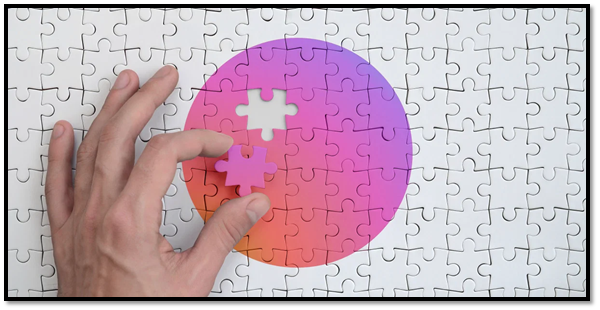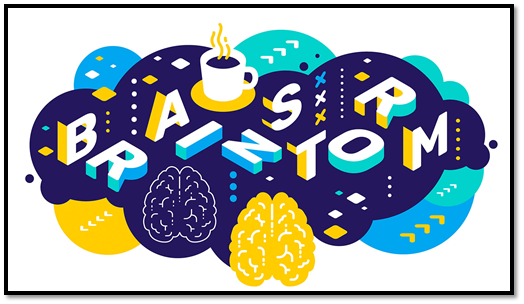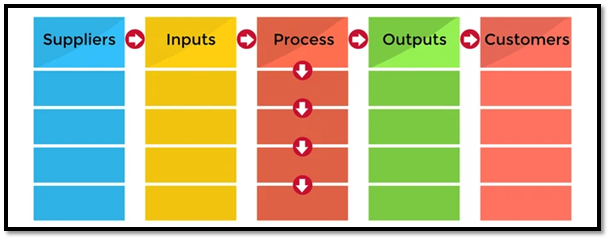SIPOC: How to improve processes in a few steps?
If your goal is to improve a process, the first thing you must do is understand it. To do this, you need to get the information, define the step by...
By Role
By Industry
By Target Customer
What We Offer
We drive business growth by improving operational efficiency through process optimization, smart automation, and cost control. Our approach boosts productivity, reduces expenses, and increases profitability with scalable, sustainable solutions
Customer Experience
We design memorable, customer-centered experiences that drive loyalty, enhance support, and optimize every stage of the journey. From maturity frameworks and experience maps to loyalty programs, service design, and feedback analysis, we help brands deeply connect with users and grow sustainably.
Marketing & Sales
We drive marketing and sales strategies that combine technology, creativity, and analytics to accelerate growth. From value proposition design and AI-driven automation to inbound, ABM, and sales enablement strategies, we help businesses attract, convert, and retain customers effectively and profitably.
Pricing & Revenue
We optimize pricing and revenue through data-driven strategies and integrated planning. From profitability modeling and margin analysis to demand management and sales forecasting, we help maximize financial performance and business competitiveness.
Digital Transformation
We accelerate digital transformation by aligning strategy, processes and technology. From operating model definition and intelligent automation to CRM implementation, artificial intelligence and digital channels, we help organizations adapt, scale and lead in changing and competitive environments.
Operational Efficiency
We enhance operational efficiency through process optimization, intelligent automation, and cost control. From cost reduction strategies and process redesign to RPA and value analysis, we help businesses boost productivity, agility, and sustainable profitability.
Customer Experience
Marketing & Sales
Pricing & Revenue
Digital Transformation
Operational Efficiency
5 min read
Por Bryan Sanabria | May 29, 2025
5 min read
Por Bryan Sanabria | May 29, 2025
Understanding the customer journey is essential for enhancing their experience and optimizing every touchpoint with the company. Without a clear view of how customers interact with internal processes, businesses can miss opportunities for improvement and create friction that affects customer satisfaction and loyalty. To achieve a structured and effective analysis, SIPOC becomes a key tool.
This method helps visualize how each stage of the Customer Journey Map relates to suppliers, inputs, processes, outputs, and customers. With its organized approach, businesses can identify gaps in the customer experience and address them before they become major issues.
Integrating SIPOC into the development of a Customer Journey Map allows companies to detect optimization opportunities and ensure that internal processes align with customer expectations. By having a structured vision, teams can improve operational efficiency and create smoother interactions at every stage of the customer journey.
How much should we learn from other disciplines? David Epstein's book "Rank: How Generalists Succeed in a Specialized World" explains the following: "The way to excel is by sampling broadly, gaining a variety of experiences, taking detours, experimenting relentlessly, delving into many interests - others. words, developing a range”.
Index

The SIPOC is the graphical representation of a process, so called by its acronym in English Supplier-Input-Process-Output-Customer. This diagram is like a Customer Journey Map as both define processes, always keeping the customer in mind.
The diagram is usually a simple representation, so the ideas in each of the spaces corresponding to the components should be as brief and concise as possible. A SIPOC diagram defines the scope of work of a team and identifies at a high level the potential gaps between what the process expects from its suppliers and above all what the customer expects from the process.

SIPOC involves thinking about the entire journey of a product or process, starting with the supplier all the way to the customer. There is an alternative way to approach process mapping which is to think about the process from customer to supplier, also called COPIS. Still, the best way to take advantage of the SIPOC for the Customer Journey Map is to add a new letter.
This new letter corresponds to the customer experience and can be represented by the letter "E". In this way, every time a SIPOC is created, there will be an important added value: What do you want the client to experience throughout this process?
Do we want the customer to be happy, excited, delighted, appreciated throughout the entire process? By including this letter, a key component of the Journey Map, the client's emotions, is being included in the analysis.
This new approach to the SIPOC diagram can be referred to as SIPOCE and serves as the input information for a Customer Journey Map.

Brainstorming is an intrinsic tool in the creation of both the Customer Journey Map and in the creation of the SIPOCE. By using these tools deep down you are brainstorming. One of the most important challenges of generating ideas is to keep a control and a clear goal for each of the spaces in which different people provide many ideas.
The SIPOCE can be easily generated with an online visualization tool. This because the SIPOCE in essence is a table where the specific information of a process is placed in a concise and simple way.
With this you have a tool that can be seen as the result of brainstorming. It can be said that the more structured the ideas, the more relevant they will be for a Customer Journey Map.
This tool is used to be clear about all the variables that affect a service or a product. This global vision of observing from different points of view is key in the Customer Journey Map. To look beyond the process, the SIPOC diagram answers these specific questions:
As can be seen, SIPOC focuses on capturing a set of inputs and outputs instead of focusing only on the individual steps involved in a process. The SIPOC is the first step to get cause and effect thinking.

As can be seen in this image, the SIPOC diagram is a tool that can be applied very easily. An important reason to use this diagram is that a lot of information can be stored in a structured and concise way.
When you have a process with many variables and verticals, to fully explain it, you will have to create a document that has many pages. This makes the exercise of analyzing a process worthless and the author of that document will probably not receive any constructive feedback from his work.
A SIPOC can be done with online mapping tools which makes it extremely useful in modern times. Also, if you wanted to do an exercise on creating a SIPOC, you could use an A3 sheet or sticky notes. What makes this diagram a very visual tool of a group result of critical thinking on a specific topic.

Each of the steps in the process must add value to the customer. This is a key pillar in both the SIPOC and the Customer Journey Map. The model of a SIPOC is used so that the process is highly effective and efficient. But none of this would be worth it if the customer is not considered in all the steps of this.
When doing the analysis of the process with SIPOC, it must be considered that each individual step must have an added value for the client. This could be complemented with a value-added matrix. Where to be placed all the procedures or activities of a process and is asked if it adds value to the end customer. Once it is identified which of these procedures does not add value to the customer, a way must be found to eliminate or transform these activities so that they do add value.
So, the exercise of understanding how the process serves the customer is a fundamental part of the type of thinking that should be used in a Customer Journey Map.

There are methods to unite work teams such as smarketing, which basically pretends that the sales and marketing teamwork for a common objective. An exercise in creating a SIPOC diagram requires the knowledge of people from multidisciplinary areas.
The purpose of the collaboration of several groups is that the diagram of the process is as close to reality as possible and for this it is necessary that the experts in each of the activities that surround the process contribute their ideas and points of view. In addition, it allows you to familiarize people whose familiarity with a process has faded or has become obsolete due to changes in the process.

To conclude, SIPOCE can be seen as the structured, visual and elegant result of brainstorming a process. The diagram must be aware of the analysis of the experience and the added value for the client in each of the procedures and activities of a process. In addition, it is said that the best way to achieve this is with multidisciplinary teams and in this way have a shared understanding between different groups.
These are some of the reasons why use this diagram in a Customer Journey Map. Even so, reader, I invite you to put this tool into practice and thus learn more about these advantages to take the customer experience to another level.
Read More: Understand the difference between Customer Journey and User Journey
Using SIPOC in a Customer Journey Map allows businesses to connect their internal processes with the customer experience in a clear and structured way. This methodology facilitates the identification of friction points, optimizes workflows, and ensures that every customer interaction is consistent and satisfying. There are at least 7 reasons to use SIPOC for your Customer Journey Map, ranging from improving operational efficiency to aligning strategies with customer expectations.
Beyond mapping the customer journey, SIPOC fosters better communication among teams, enabling more effective collaboration to enhance the user experience. By understanding the relationship between each process and its impact on the customer, businesses can make informed decisions and align their strategies more effectively.
Applying SIPOC in the development of a Customer Journey Map not only improves internal management but also boosts customer loyalty by offering more agile and personalized interactions. With a clear view of each stage of the journey, businesses can strengthen their value proposition and differentiate themselves through a seamless and efficient customer experience.

If your goal is to improve a process, the first thing you must do is understand it. To do this, you need to get the information, define the step by...

In daily life, we are constantly bombarded with information. Hundreds of WhatsApp messages, an inbox full of unread emails, and a constant and...

Do you want to give the customer the best experience in the purchase process, but do not know how? The first step is to understand what you are...